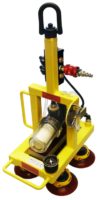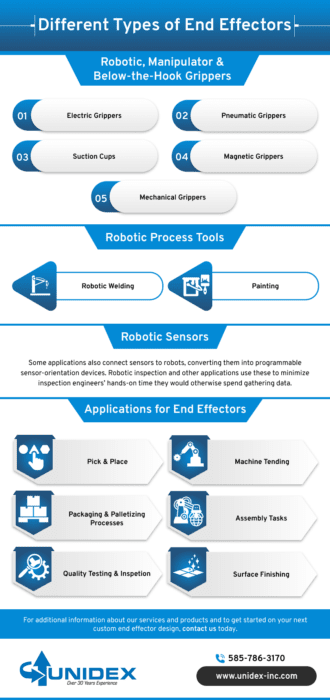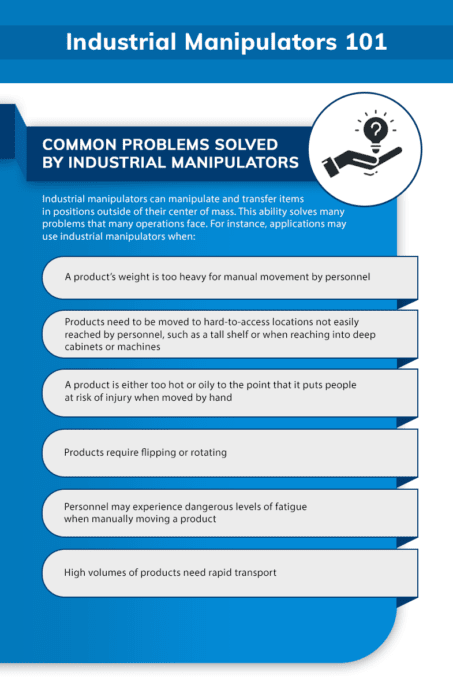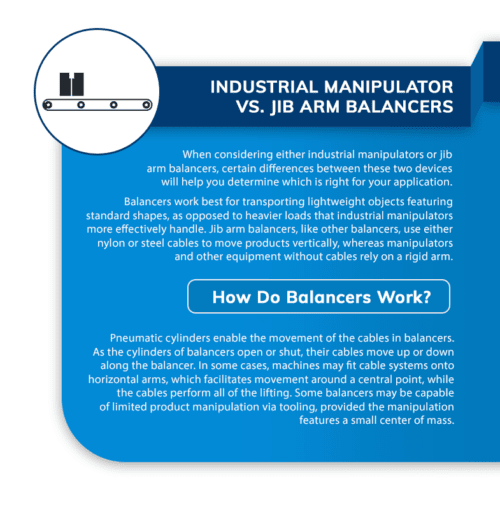End Effector: What It Is, How It Works, Types, Applications
Leave a Comment Manipulators and robot arms require end effectors to perform their designated tasks. They function by attaching to manipulator arms or a robot’s wrist, which enables this equipment to interact with a subject.
Manipulators and robot arms require end effectors to perform their designated tasks. They function by attaching to manipulator arms or a robot’s wrist, which enables this equipment to interact with a subject.
Operators often rely on gripper end effectors to lift and handle certain objects using robotic machinery, which is why these components are ideal for assembly, pick-and-place, and machine-tending applications. Operations use end effectors for robotics or manipulators to improve safety measures or eliminate safety concerns around the use of this machinery. In this post, we’ll provide an overview of the different end effector types, along with their various applications.
Different Types of End Effectors
Depending on the intended application, operations may use a variety of end effectors to perform certain tasks.
 Click to Download
Click to DownloadRobotic Grippers
- Electric Grippers — Electric grippers use motor-driven fingers, which allow for easy control of position and speed. Many applications use adaptive electric end effectors, including machine tending, handling, and bin picking, among others.
- Pneumatic Grippers — These grippers use air to function, normally by forcing compressed air through a piston. Pneumatic grippers allow for angular or parallel movement.
- Suction Cups — Suction cups use a vacuum to pick up parts. Their simple design offers ample flexibility for material handling, along with cost-effectiveness. However, they are unable to handle perforated materials.
- Magnetic Grippers — These grippers feature a design that’s similar to suction cups, but they’re used specifically for handling ferrous material. Additionally, they eliminate the risk of dropping materials during power outages or air loss, and they don’t come with air costs. Their simple design also requires minimal maintenance.
- Mechanical Grippers — Non-powered mechanical grippers normally feature designs for specific types of parts. These grippers may include forks, hooks, or complex fingers that allow operators to clamp and rotate them.
Robotic Process Tools
- Robotic Welding — Applications often use robot arms with welding end effectors, which are most frequently found in the automotive industry. Because of their precision and consistency, robotic welding systems usually produce great results.
- Painting — The application of paint must be consistent and smooth, which often presents a challenge for human operators. In addition, these applications must protect against contamination in a controlled environment. Both of these factors make painting robots suitable for these conditions, allowing for high-quality paintwork while reducing the risk of contamination.
Robotic Sensors
Some applications also connect sensors to robots, converting them into programmable sensor-orientation devices. Robotic inspection and other applications use these to minimize inspection engineers’ hands-on time they would otherwise spend gathering data.
Applications for End Effectors
Many types of applications use robotics and manipulators with end effectors. Some potential applications include:
Pick & Place
These tasks involve picking up and placing objects in another location. Oftentimes, these applications require safe handling and precision when manipulating the object, regardless of the object’s material or its fragility.
Machine Tending
Machine tending entails overseeing equipment as it loads and unloads machines. It could also involve blow off, part inspection, sorting and packaging, and wash tasks.
Packaging & Palletizing Processes
These processes include high-speed and precision packaging assembly, pallet forming, and product loading, among other tasks. They’re particularly demanding in many applications due to the need to handle often fragile materials with a combination of efficiency and care.
Assembly Tasks
Assembly is a manufacturing process in which machinery assembles products by adding individual components one at a time in a specific sequence. In completing these tasks, the robot’s or manipulator’s end effector frequently handles objects of various shapes and sizes.
Quality Testing & Inspection
Following the manufacturing process, products require the application of consistent force and rigorous testing. While human workers may struggle to maintain consistent tension, pressure, and overall precision, it’s easy to program these tasks when using robotics with the appropriate end effectors.
Surface Finishing
Surface finishing tasks require adequate flexibility, which robotics and end effectors help achieve. Seeing as surface finishing is a particularly dirty task in the production process, it’s also ideal for automating with the right programmable machinery.
End Effectors & Tooling at Unidex
To meet the needs of any application, it’s important to select not only the right robotic and manipulator systems but also the right end effector. At Unidex, we offer custom mechanical, powered, and manual end effectors based on your individual requirements. Our clients choose Unidex because we offer custom solutions that consider the entire application, taking a holistic approach to solving a wide range of potential problems in the workspace.
For additional information about our services and products and to get started on your next custom end effector design, contact us today.
Industrial Manipulators 101 – All You Need to Know
Leave a CommentIndustrial manipulators are lift-assist devices that take the stress of repetitively lifting heavy or bulky items off personnel. Routinely lifting and transporting heavy items presents workplace safety risks and has the potential to cause musculoskeletal issues for workers due to improper lifting techniques and fatigue. These devices help workers across a variety of handling operations, allowing users to complete handling tasks with consistent safety, convenience, and efficiency.
Industrial manipulators are designed to mimic the movement of human hands, wrists, and arms for optimal performance, and they are available in portable, floor-mounted, and overhead-mounted models. As industrial manipulators assist with material handling and ergonomic lifting, they will subsequently reduce fatigue, help minimize the risk of injury, and increase overall productivity.
Common Problems Solved by Industrial Manipulators
Industrial manipulators can manipulate and transfer items in positions outside of their center of mass. This ability solves many problems that many operations face. For instance, applications may use industrial manipulators when:
- A product’s weight is too heavy for manual movement by personnel
- Products need to be moved to hard-to-access locations not easily reached by personnel, such as a tall shelf or when reaching into deep cabinets or machines
- A product is either too hot or oily to the point that it puts people at risk of injury when moved by hand
- Products require flipping or rotating
- Personnel may experience dangerous levels of fatigue when manually moving a product
- High volumes of products need rapid transport
Industrial Manipulator vs. Jib Arm Balancers
When considering either industrial manipulators or jib arm balancers, certain differences between these two devices will help you determine which is right for your application.
Balancers work best for transporting lightweight objects featuring standard shapes, as opposed to heavier loads that industrial manipulators more effectively handle. Jib arm balancers, like other balancers, use either nylon or steel cables to move products vertically, whereas manipulators and other equipment without cables rely on a rigid arm.
How Do Balancers Work?
Pneumatic cylinders enable the movement of the cables in balancers. As the cylinders of balancers open or shut, their cables move up or down along the balancer. In some cases, machines may fit cable systems onto horizontal arms, which facilitates movement around a central point, while the cables perform all of the lifting. Some balancers may be capable of limited product manipulation via tooling, provided the manipulation features a small center of mass.
Industries for Industrial Manipulators & Jib Arm Balancers
Depending on the needs of different applications, facilities may use either industrial manipulators or jib arm balancers for improved material handling capabilities. Some specific applications for these devices include:
- Building: Applications in the construction and building manufacturing industries frequently use industrial manipulators to assist with handling a variety of materials, including drainage pipes, paving slabs, concrete products, and many other heavy loads.
- Packaging and Packaging Lines: In many cases, companies in the packaging industry will need to move products of varying sizes and shapes, such as pallets, boxes, drums, and plastic rolls. These and other products require lifting solutions that are dependable, adaptable, and versatile for use with many types of products.
- Textiles: Textile applications rely on industrial manipulators to handle rolls of different materials and sizes.
- Chemistry and Foundry: These industries often use industrial manipulators to handle and lift a variety of hazardous chemicals to minimize the risk of exposure to employees. Foundries may also use industrial manipulators to handle other heavy items, including crucibles, foundry buckets, molds, rims, foundry pieces, and precision castings.
- Food: Industrial manipulators carry many food products such as whole cheeses and other dairy products, meats, bottles, processed food packaging, food bags, and carton boxes.
- Mechanics: Industrial manipulators’ rigid steel arms can complete a multitude of tasks that involve complex pneumatic rotations and tilts.
- Wood: Industrial manipulators’ capabilities also enable them to carry and handle many wood products of varying shapes, sizes, and weights.
- Electromechanics: The electromechanical industry frequently experiences ergonomic problems due to the frequent handling of bulky products. Industrial manipulators handle and carry electromechanical products such as tubes, TVs, appliances, and air conditioners, among others.
- Automotive: Large and heavy automotive parts often require handling assistance. Industrial manipulators assist with lifting and handling batteries, wheels, doors, bodywork, glass, dashboards, seats, and more.
Industrial Manipulators from Unidex
Reliable industrial manipulators support the health and safety of workers while enhancing workplace efficiency. At Unidex, we offer a selection of high-quality industrial manipulator solutions, including overhead-mounted, ECL electric column lift, EH electric-hydraulic manipulators, jib arms, and more. We also offer customized solutions based on your specifications.
For more details about our industrial manipulators and other products and services, contact us today and we’ll put you in touch with one of our experts.




